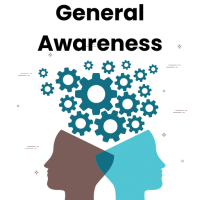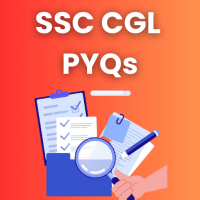SSC CGL Exam > SSC CGL Questions > What would be the correct indirect speech for...
Start Learning for Free
What would be the correct indirect speech form of: "She said, 'I have been waiting for hours'"?
- a)She said that she was waiting for hours.
- b)She said that she had been waiting for hours.
- c)She said that she has been waiting for hours.
- d)She said that she have been waiting for hours.
Correct answer is option 'B'. Can you explain this answer?
Verified Answer
What would be the correct indirect speech form of: "She said, 'I have ...
The present perfect continuous tense changes to its corresponding past perfect continuous form in indirect speech. Thus, the correct transformation is "She said that she had been waiting for hours."
View all questions of this test
Most Upvoted Answer
What would be the correct indirect speech form of: "She said, 'I have ...
Understanding Indirect Speech
Indirect speech, also known as reported speech, is used to convey what someone else has said without quoting their exact words. When converting direct speech to indirect speech, certain changes in tense and pronouns are necessary.
Analyzing the Given Sentence
The original sentence is:
"She said, 'I have been waiting for hours.'"
Here, the speaker (she) mentions that she has been waiting, indicating an action that started in the past and continues to the present.
Reasons for Choosing Option B
The correct indirect speech form is:
"She said that she had been waiting for hours."
Here's why this option is correct:
- Tense Change:
- The present perfect continuous tense "have been waiting" changes to the past perfect continuous tense "had been waiting." This is necessary because the reporting verb "said" is in the past tense.
- Time Reference:
- The phrase "for hours" remains unchanged as it still accurately reflects the duration of the waiting period.
Why Other Options Are Incorrect
- Option A: "She said that she was waiting for hours."
- This option uses the past continuous tense, which does not accurately convey the ongoing nature of the waiting period starting in the past and continuing up to now.
- Option C: "She said that she has been waiting for hours."
- This maintains the present perfect tense, which contradicts the past reporting verb "said."
- Option D: "She said that she have been waiting for hours."
- This option is grammatically incorrect due to the use of "have" instead of "has" for the third-person singular subject.
Conclusion
Thus, option B, "She said that she had been waiting for hours," is the correct transformation into indirect speech, accurately reflecting the original meaning while adhering to grammatical rules.
Indirect speech, also known as reported speech, is used to convey what someone else has said without quoting their exact words. When converting direct speech to indirect speech, certain changes in tense and pronouns are necessary.
Analyzing the Given Sentence
The original sentence is:
"She said, 'I have been waiting for hours.'"
Here, the speaker (she) mentions that she has been waiting, indicating an action that started in the past and continues to the present.
Reasons for Choosing Option B
The correct indirect speech form is:
"She said that she had been waiting for hours."
Here's why this option is correct:
- Tense Change:
- The present perfect continuous tense "have been waiting" changes to the past perfect continuous tense "had been waiting." This is necessary because the reporting verb "said" is in the past tense.
- Time Reference:
- The phrase "for hours" remains unchanged as it still accurately reflects the duration of the waiting period.
Why Other Options Are Incorrect
- Option A: "She said that she was waiting for hours."
- This option uses the past continuous tense, which does not accurately convey the ongoing nature of the waiting period starting in the past and continuing up to now.
- Option C: "She said that she has been waiting for hours."
- This maintains the present perfect tense, which contradicts the past reporting verb "said."
- Option D: "She said that she have been waiting for hours."
- This option is grammatically incorrect due to the use of "have" instead of "has" for the third-person singular subject.
Conclusion
Thus, option B, "She said that she had been waiting for hours," is the correct transformation into indirect speech, accurately reflecting the original meaning while adhering to grammatical rules.

|
Explore Courses for SSC CGL exam
|

|
Question Description
What would be the correct indirect speech form of: "She said, 'I have been waiting for hours'"?a)She said that she was waiting for hours.b)She said that she had been waiting for hours.c)She said that she has been waiting for hours.d)She said that she have been waiting for hours.Correct answer is option 'B'. Can you explain this answer? for SSC CGL 2025 is part of SSC CGL preparation. The Question and answers have been prepared according to the SSC CGL exam syllabus. Information about What would be the correct indirect speech form of: "She said, 'I have been waiting for hours'"?a)She said that she was waiting for hours.b)She said that she had been waiting for hours.c)She said that she has been waiting for hours.d)She said that she have been waiting for hours.Correct answer is option 'B'. Can you explain this answer? covers all topics & solutions for SSC CGL 2025 Exam. Find important definitions, questions, meanings, examples, exercises and tests below for What would be the correct indirect speech form of: "She said, 'I have been waiting for hours'"?a)She said that she was waiting for hours.b)She said that she had been waiting for hours.c)She said that she has been waiting for hours.d)She said that she have been waiting for hours.Correct answer is option 'B'. Can you explain this answer?.
What would be the correct indirect speech form of: "She said, 'I have been waiting for hours'"?a)She said that she was waiting for hours.b)She said that she had been waiting for hours.c)She said that she has been waiting for hours.d)She said that she have been waiting for hours.Correct answer is option 'B'. Can you explain this answer? for SSC CGL 2025 is part of SSC CGL preparation. The Question and answers have been prepared according to the SSC CGL exam syllabus. Information about What would be the correct indirect speech form of: "She said, 'I have been waiting for hours'"?a)She said that she was waiting for hours.b)She said that she had been waiting for hours.c)She said that she has been waiting for hours.d)She said that she have been waiting for hours.Correct answer is option 'B'. Can you explain this answer? covers all topics & solutions for SSC CGL 2025 Exam. Find important definitions, questions, meanings, examples, exercises and tests below for What would be the correct indirect speech form of: "She said, 'I have been waiting for hours'"?a)She said that she was waiting for hours.b)She said that she had been waiting for hours.c)She said that she has been waiting for hours.d)She said that she have been waiting for hours.Correct answer is option 'B'. Can you explain this answer?.
Solutions for What would be the correct indirect speech form of: "She said, 'I have been waiting for hours'"?a)She said that she was waiting for hours.b)She said that she had been waiting for hours.c)She said that she has been waiting for hours.d)She said that she have been waiting for hours.Correct answer is option 'B'. Can you explain this answer? in English & in Hindi are available as part of our courses for SSC CGL.
Download more important topics, notes, lectures and mock test series for SSC CGL Exam by signing up for free.
Here you can find the meaning of What would be the correct indirect speech form of: "She said, 'I have been waiting for hours'"?a)She said that she was waiting for hours.b)She said that she had been waiting for hours.c)She said that she has been waiting for hours.d)She said that she have been waiting for hours.Correct answer is option 'B'. Can you explain this answer? defined & explained in the simplest way possible. Besides giving the explanation of
What would be the correct indirect speech form of: "She said, 'I have been waiting for hours'"?a)She said that she was waiting for hours.b)She said that she had been waiting for hours.c)She said that she has been waiting for hours.d)She said that she have been waiting for hours.Correct answer is option 'B'. Can you explain this answer?, a detailed solution for What would be the correct indirect speech form of: "She said, 'I have been waiting for hours'"?a)She said that she was waiting for hours.b)She said that she had been waiting for hours.c)She said that she has been waiting for hours.d)She said that she have been waiting for hours.Correct answer is option 'B'. Can you explain this answer? has been provided alongside types of What would be the correct indirect speech form of: "She said, 'I have been waiting for hours'"?a)She said that she was waiting for hours.b)She said that she had been waiting for hours.c)She said that she has been waiting for hours.d)She said that she have been waiting for hours.Correct answer is option 'B'. Can you explain this answer? theory, EduRev gives you an
ample number of questions to practice What would be the correct indirect speech form of: "She said, 'I have been waiting for hours'"?a)She said that she was waiting for hours.b)She said that she had been waiting for hours.c)She said that she has been waiting for hours.d)She said that she have been waiting for hours.Correct answer is option 'B'. Can you explain this answer? tests, examples and also practice SSC CGL tests.

|
Explore Courses for SSC CGL exam
|

|
Signup for Free!
Signup to see your scores go up within 7 days! Learn & Practice with 1000+ FREE Notes, Videos & Tests.


















